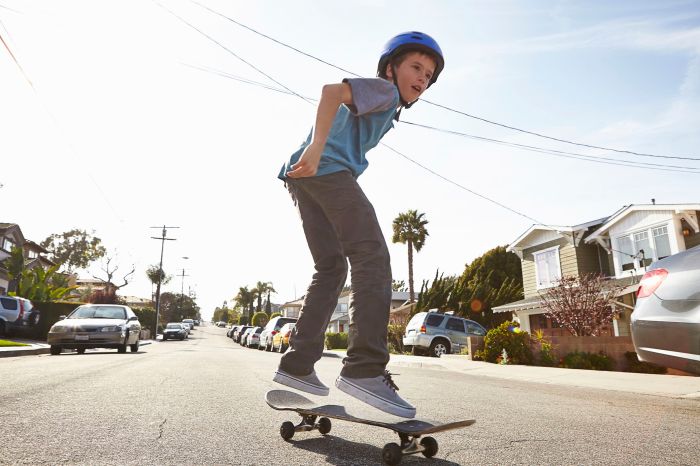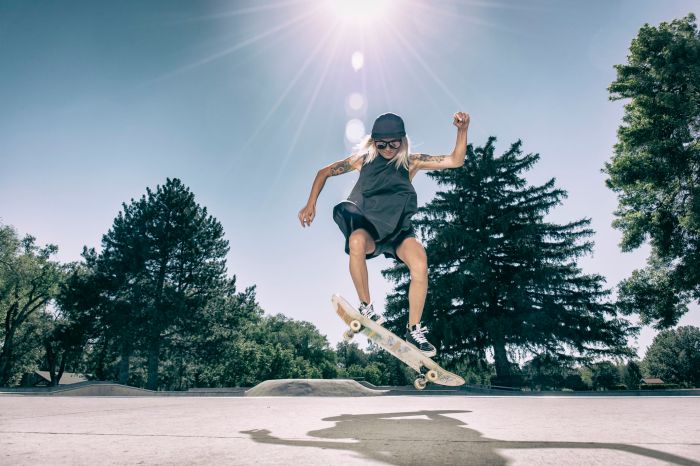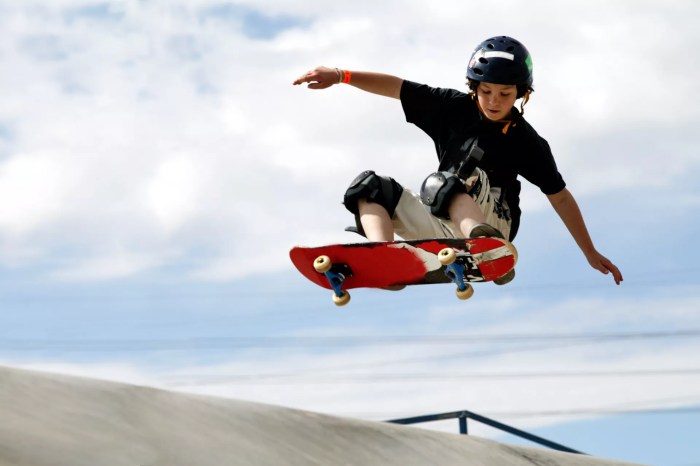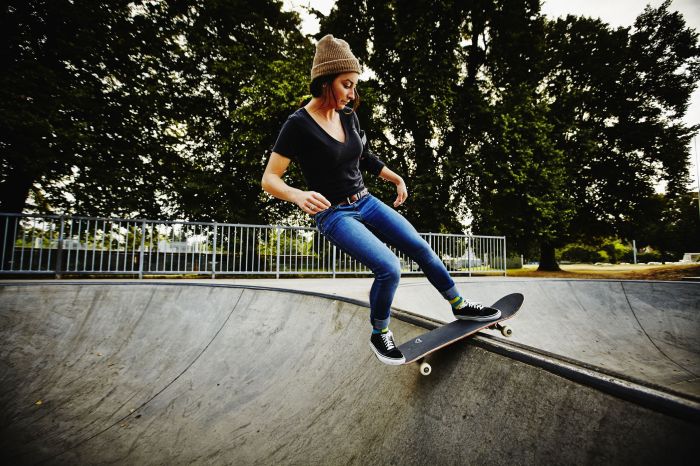To skate in spanish conjugation – Embark on a linguistic adventure as we delve into the intricacies of “patinar” conjugation in Spanish, a language brimming with rich verb forms. From the present tense to the conditional, this guide will illuminate the nuances of skating vocabulary, empowering you to navigate Spanish-speaking cultures with confidence.
Beyond mere conjugation, we will explore the cultural significance of skating in Spanish-speaking countries, uncovering the vibrant traditions and customs that have shaped this beloved pastime.
Verb Conjugation Overview

Verb conjugation is the process of changing the form of a verb to indicate different grammatical categories such as tense, mood, person, number, and gender.
In Spanish, verbs are conjugated according to three main categories: tense, mood, and voice.
Tenses
Spanish verbs have three main tenses: present, past, and future.
- Present tenseis used to describe actions that are happening now or that are habitual.
- Past tenseis used to describe actions that happened in the past.
- Future tenseis used to describe actions that will happen in the future.
Moods
Spanish verbs have three main moods: indicative, subjunctive, and imperative.
- Indicative moodis used to describe facts or events that are considered to be true.
- Subjunctive moodis used to describe actions or events that are hypothetical, uncertain, or desired.
- Imperative moodis used to give commands or instructions.
Voice
Spanish verbs have two main voices: active and passive.
- Active voiceis used when the subject of the verb is performing the action.
- Passive voiceis used when the subject of the verb is receiving the action.
Conjugation of “Patinar” (To Skate)

In Spanish, verbs are conjugated to match the subject of a sentence, indicating the tense, mood, and person. The verb “patinar” (to skate) has regular conjugations, following the patterns of other “-ar” verbs.
This document provides an overview of the conjugation of “patinar” in various tenses, including the present, past, future, and conditional.
Present Tense Conjugation
The present tense of “patinar” is used to describe actions that are happening now or habits that occur regularly.
- Yo patino– I skate
- Tú patinas– You (informal) skate
- Él/Ella/Usted patina– He/She/You (formal) skates
- Nosotros patinamos– We skate
- Vosotros patináis– You (plural, informal) skate
- Ellos/Ellas/Ustedes patinan– They/You (plural, formal) skate
Irregular Verb Conjugation
Irregularities in Conjugating “Patinar”
The verb “patinar” (to skate) is an irregular verb in Spanish, meaning it does not follow the regular conjugation patterns for verbs ending in “-ar.” The irregularities in conjugating “patinar” occur in the present tense, preterite tense, and imperfect tense.
Reasons for Irregularities
The irregularities in conjugating “patinar” are due to historical sound changes that have occurred in the Spanish language over time. These changes have affected the pronunciation and spelling of the verb, leading to the irregular forms we see today.
Examples of Irregular Conjugations
- Present Tense:Yo patino, tú patinas, él/ella patina, nosotros patinamos, vosotros patináis, ellos/ellas patinan
- Preterite Tense:Yo patiné, tú patinaste, él/ella patinó, nosotros patinamos, vosotros patinasteis, ellos/ellas patinaron
- Imperfect Tense:Yo patinaba, tú patinabas, él/ella patinaba, nosotros patinábamos, vosotros patinabais, ellos/ellas patinaban
Uses of “Patinar”

The verb “patinar” in Spanish, meaning “to skate,” can be employed in various contexts, encompassing both literal and figurative uses. It is a versatile term that can describe the act of skating on ice, rollerblades, or skateboards.
When referring to the literal action of skating, “patinar” is commonly used to describe recreational activities such as ice skating or rollerblading. In these instances, it conveys the notion of gliding smoothly over a surface using skates.
Figurative Uses
Beyond its literal interpretation, “patinar” also finds application in figurative contexts. One such usage is to describe a situation where someone or something is moving or operating smoothly and effortlessly. In this sense, “patinar” implies a sense of grace and efficiency, akin to the effortless gliding of a skater on ice.
Additionally, “patinar” can be used metaphorically to depict a person who is avoiding or evading a particular situation or responsibility. In this context, the term suggests that the individual is “skating” away from their obligations, much like a skater gliding away from an obstacle.
To illustrate the various uses of “patinar,” consider the following examples:
- Literal use:“Los niños estaban patinando sobre hielo en el parque.” (The children were ice skating in the park.)
- Figurative use (smooth operation):“El proyecto patinó sin problemas, gracias a la excelente planificación.” (The project proceeded smoothly, thanks to excellent planning.)
- Figurative use (avoidance):“El político patinó sobre la pregunta, evitando dar una respuesta directa.” (The politician skated around the question, avoiding a direct answer.)
Skating Terminology: To Skate In Spanish Conjugation

Skating involves a variety of maneuvers and techniques, each with its own specific terminology. This glossary provides a comprehensive overview of common skating terms in Spanish, along with their English translations and explanations.
Glossary of Common Skating Terms
| Spanish Term | English Translation | Meaning and Usage |
|---|---|---|
| Adelante | Forward | Used to describe skating in a forward direction. |
| Atrás | Backward | Used to describe skating in a backward direction. |
| Caída | Fall | An unintended descent to the ground. |
| Giro | Turn | A maneuver that involves changing direction. |
| Salto | Jump | A maneuver that involves propelling oneself into the air. |
| Truco | Trick | A complex maneuver that requires skill and coordination. |
| Velocidad | Speed | The rate at which a skater moves. |
Skating Safety

Skating is a fun and exhilarating activity, but it’s important to remember that it can also be dangerous. Every year, thousands of people are injured while skating. By taking a few simple precautions, you can help to reduce your risk of injury.One
of the most important things you can do is to wear a helmet. A helmet can protect your head from serious injury in the event of a fall. You should also wear other protective gear, such as knee pads, elbow pads, and wrist guards.
These can help to protect you from scrapes and bruises.Another important safety tip is to skate in a safe location. Avoid skating on busy streets or in areas with uneven surfaces. If you’re skating in a park, be aware of other skaters and pedestrians.Finally,
it’s important to be aware of your own abilities and to skate within your limits. Don’t try to do tricks or maneuvers that you’re not comfortable with. If you’re not sure how to do something, ask a friend or instructor for help.By
following these simple safety tips, you can help to reduce your risk of injury and enjoy skating safely.
Skating Safely in Different Locations, To skate in spanish conjugation
The safety precautions you need to take will vary depending on where you’re skating. Here are some tips for skating safely in different locations:*
-*On the street
When skating on the street, be aware of traffic and pedestrians. Obey all traffic laws and stay out of the way of cars.
-
-*In a park
Parks are a great place to skate, but be aware of other skaters and pedestrians. Be careful not to skate too close to trees or other obstacles.
-*On a rink
Rinks are a safe place to skate, but be aware of other skaters. Be careful not to skate too close to the boards or other skaters.
FAQ Compilation
What are the key differences between regular and irregular verb conjugation in Spanish?
Regular verbs follow predictable patterns, while irregular verbs exhibit unique conjugations that deviate from these patterns.
How does the cultural significance of skating vary across Spanish-speaking countries?
Skating holds diverse cultural meanings, from recreational pastime to competitive sport, influenced by local traditions and customs.
What are some common safety precautions to observe while skating?
Always wear protective gear, skate in designated areas, and be aware of your surroundings to minimize risks.